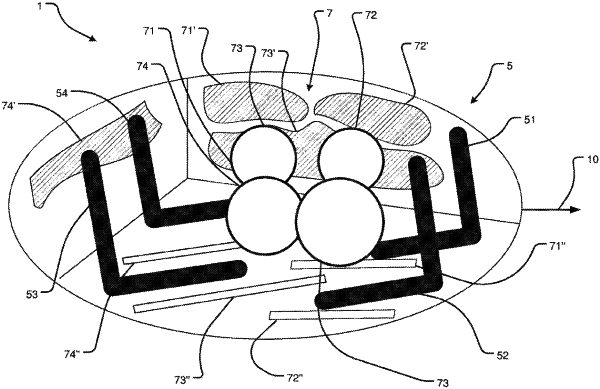| CPC B60N 2/0244 (2013.01) [B60G 17/016 (2013.01); B60N 2/4207 (2013.01); B60N 2/501 (2013.01); B60N 2002/0268 (2013.01)] | 15 Claims |

|
1. A system for reducing motion sickness symptoms in operation of a vehicle, comprising:
a sensor system and/or a navigation system;
a vehicle seat system, a vehicle stabilization apparatus, and a display unit; and
a control unit comprising a processor and coupled to the sensor system and/or to the navigation system, the control unit being further coupled to the vehicle seat system, to the vehicle stabilization apparatus, and to the display unit,
wherein the sensor system and the navigation system are configured so as to receive surroundings data and/or vehicle component data of the vehicle from which movements of the vehicle result and to transmit them to the control unit,
the vehicle seat system is configured so as to receive seat adjustment signals from the control unit and to adjust at least one vehicle seat of the vehicle in accordance with the received seat adjustment signals,
the vehicle stabilization apparatus is configured so as to receive vehicle stabilization signals from the control unit and to adjust at least one vehicle component of the vehicle in accordance with the received vehicle stabilization signals,
the display unit is configured so as to receive display signals from the control unit and to display the received display signals, and the control unit is configured so as to generate vehicle stabilization signals, seat adjustment signals and display signals depending on the received surroundings data and/or vehicle component data,
wherein generating the vehicle stabilization signals comprises:
determining first forces acting on vehicle components due to movements of the vehicle using the surroundings data and/or vehicle component data; and determining vehicle stabilization signals that are designed such that the vehicle stabilization signals bring about second forces that counteract the first forces after adjusting the at least one vehicle component of the vehicle in accordance with the vehicle stabilization signals;
wherein generating the seat adjustment signals comprises:
determining first acceleration forces that would act on a vehicle occupant sitting in the direction of travel due to the movements of the vehicle using the surroundings data and/or vehicle component data; and
determining seat adjustment signals that are designed such that the seat adjustment signals bring about second acceleration forces for a vehicle occupant after adjusting the vehicle seat in accordance with the seat adjustment signals such that the first acceleration forces act in an absolute manner on the vehicle occupant,
independently of an orientation of the vehicle seat on which the vehicle occupant is sitting; and
wherein generating the display signals comprises: determining display signals that are designed such that the display signals bring about a sensory perception that corresponds to the first acceleration forces, for the vehicle occupant on the vehicle seat adjusted in accordance with the seat adjustment signals,
wherein the sensory perception comprises at least one of visual perception, auditive perception, tactile perception, olfactory perception and gustatory perception.
|